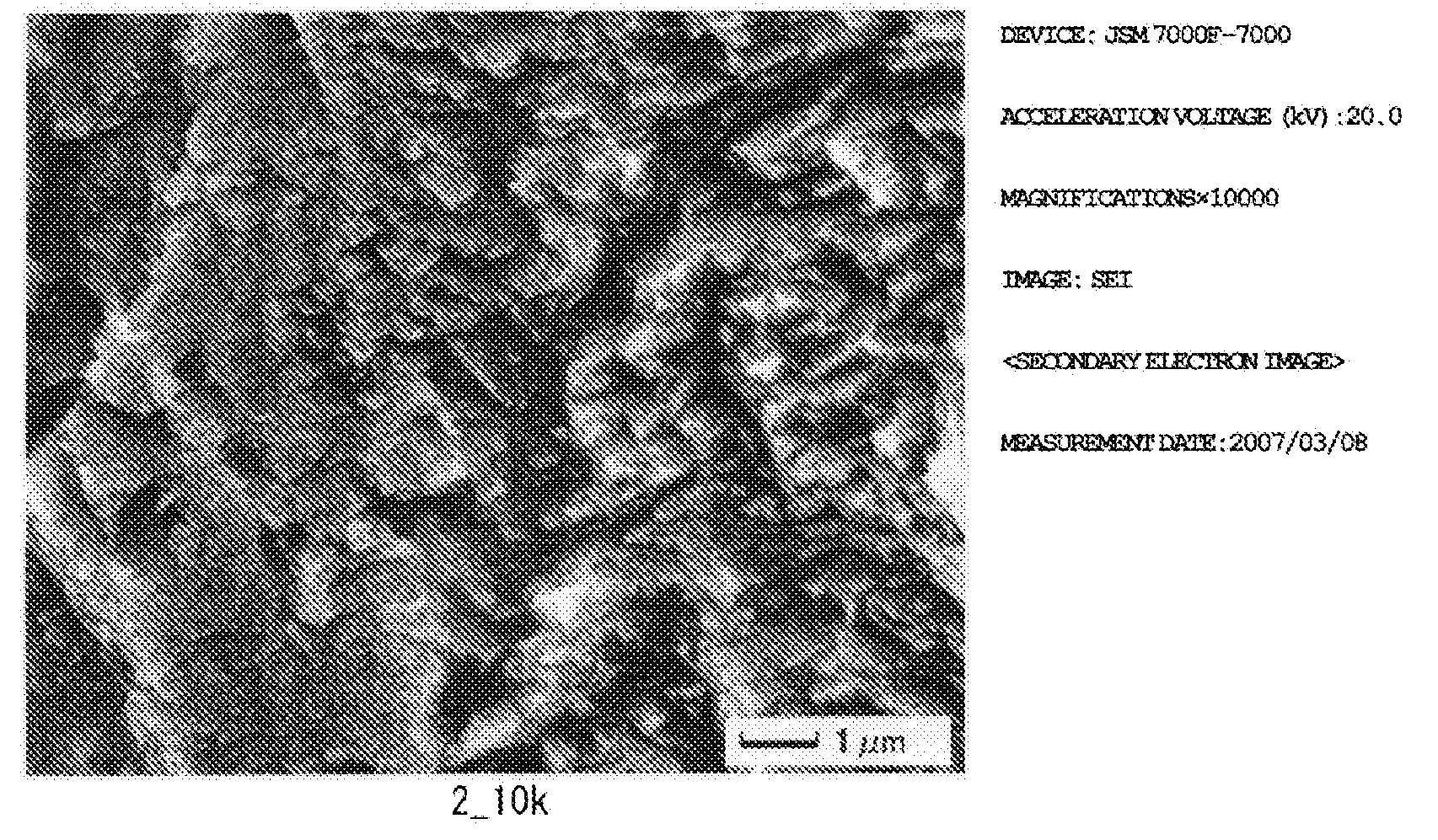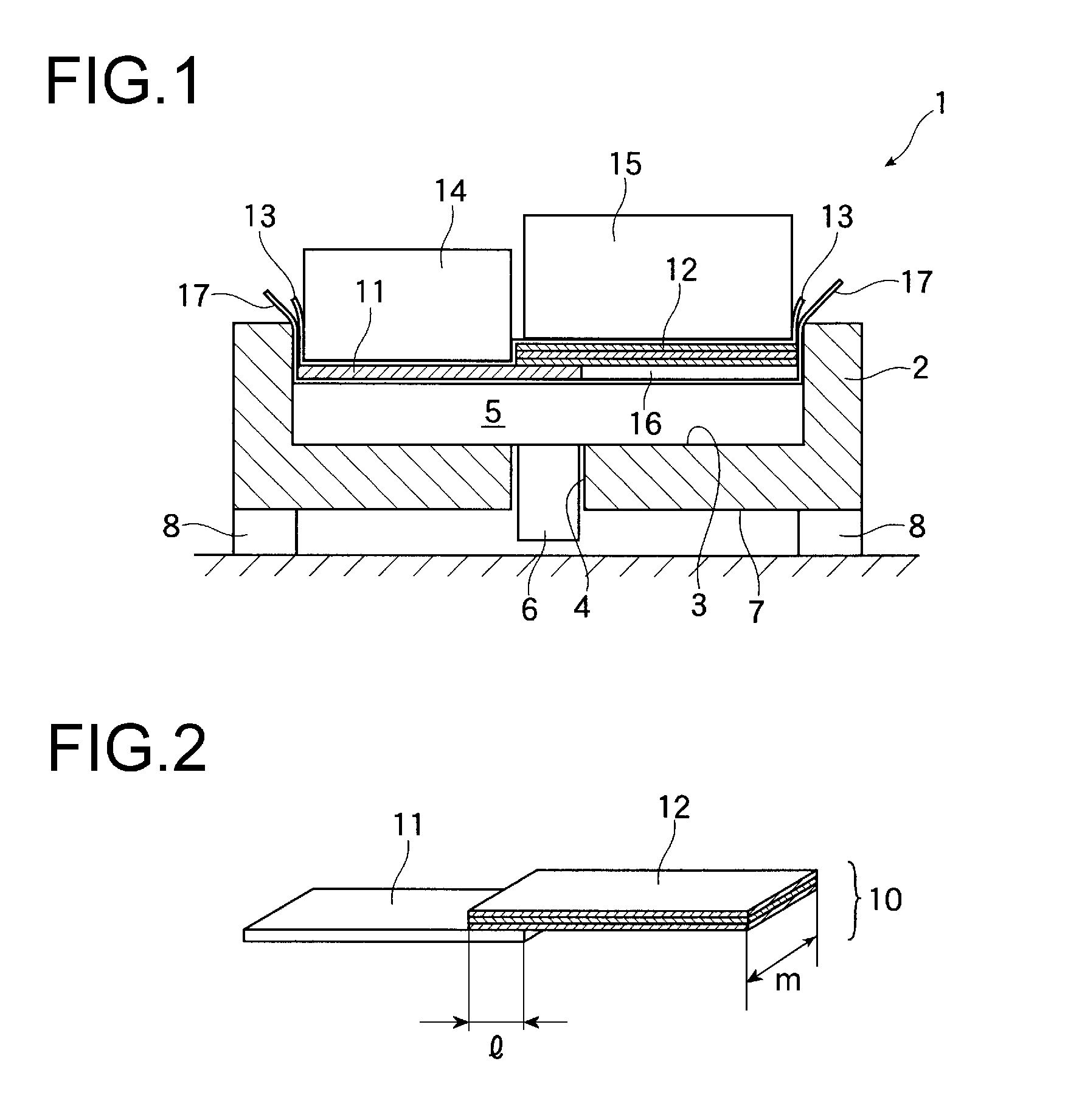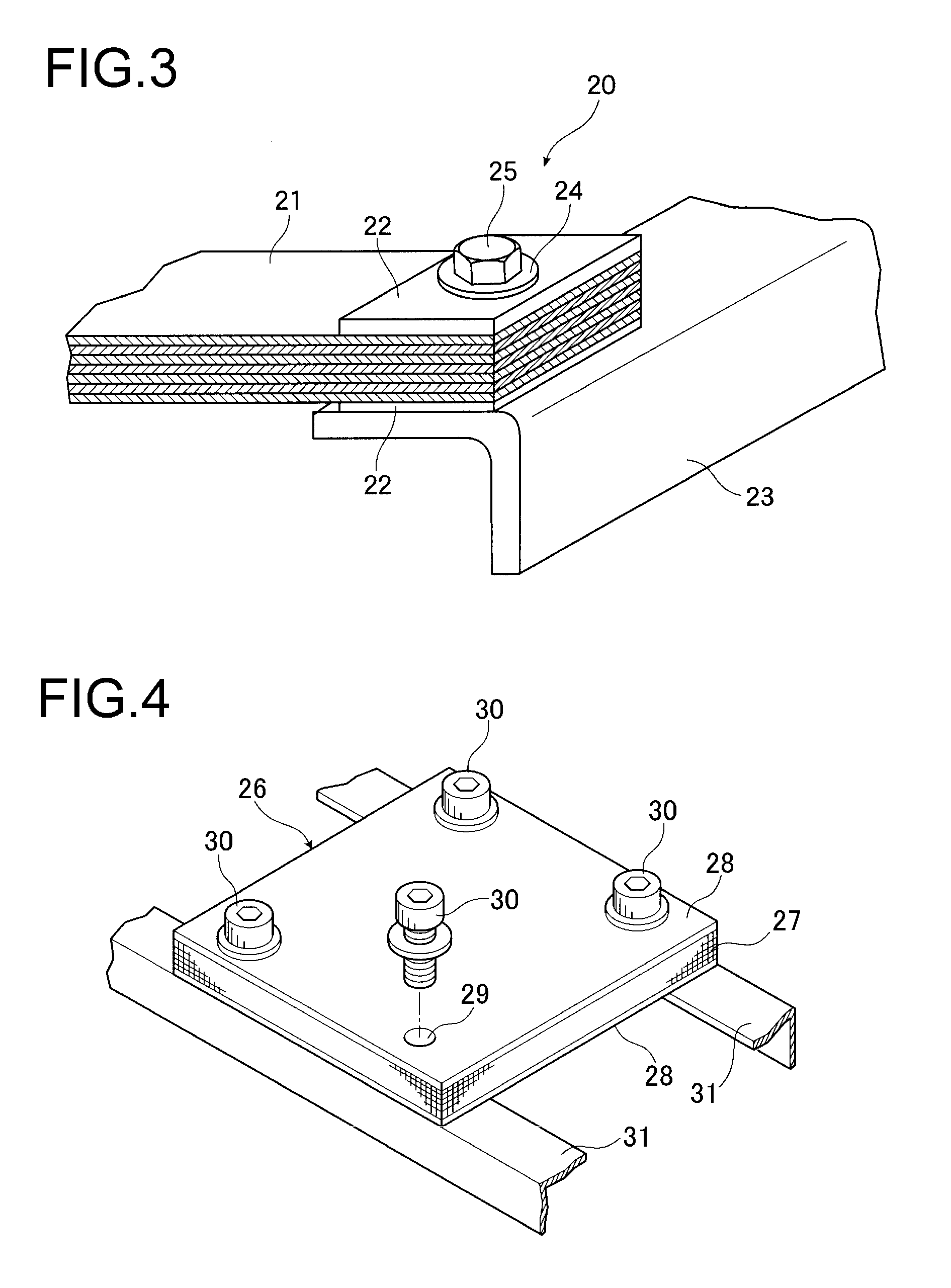Steel material composite and manufacturing method thereof
a technology of steel materials and composites, applied in the direction of record information storage, adhesion processes with surface pretreatment, synthetic resin layered products, etc., can solve the problems of unnecessary pre-reg demolding agents and the weight of the structure employed
- Summary
- Abstract
- Description
- Claims
- Application Information
AI Technical Summary
Benefits of technology
Problems solved by technology
Method used
Image
Examples
working examples
[0114]Experimental examples will be described below as working examples.
experimental example 1
Steel Material and Adhesive
[0115]A commercially available 1.6 mm-thick plate material of a cold rolled steel material “SPCC bright” was procured and was cut into 18 mm×45 mm rectangular steel plate pieces. A hole was formed at an end of each steel plate piece, a PVC-coated copper wire was threaded through each hole of a dozen of the steel plate pieces and then the copper wires were bent to suspend simultaneously all the pieces in such a manner as to prevent the latter from becoming stacked on one another. An aqueous solution containing a commercially available degreasing agent “NE-6 (by Meltex)” for aluminum alloys by 7.5% and set to a temperature of 60° C. was prepared in a bath. The steel plate pieces were immersed for 5 minutes in the aqueous solution and were then rinsed with public tap water (Ota-city, Gunma-prefecture, Japan). Next, the steel plate pieces were immersed for 1 minute in another dipping bath of a 1.5% aqueous solution of caustic soda at 40° C. and were rinsed wit...
experimental example 2
Steel Material and Adhesive
[0118]SPCC steel plate pieces were treated in exactly the same manner as the treatment method in experimental example 1 up to halfway. Specifically, the pieces were etched with an aqueous solution of sulfuric acid and were then rinsed with water in exactly the same way. After rinsing, the pieces were immersed for 1 minute in a 3.5% aqueous solution of hydrazine monohydrate at 25° C., followed by thorough water rinsing. The pieces were then dried for 15 minutes in a warm-air drier at 67° C. One of the obtained steel plate pieces was subjected to an XPS analysis, which clearly revealed the presence of nitrogen atoms. FIGS. 7(a) and 7(b) illustrate observation results using an electron microscope with magnifications of 10,000 times and 100,000 times, respectively. Thereafter, the ends of the SPCC steel plate pieces were bonded to each other using the epoxy adhesive “EP-106”, in exactly the same way as in experimental example 1. The shear breaking strength in ...
PUM
| Property | Measurement | Unit |
|---|---|---|
| width | aaaaa | aaaaa |
| depth | aaaaa | aaaaa |
| height | aaaaa | aaaaa |
Abstract
Description
Claims
Application Information
 Login to View More
Login to View More - R&D
- Intellectual Property
- Life Sciences
- Materials
- Tech Scout
- Unparalleled Data Quality
- Higher Quality Content
- 60% Fewer Hallucinations
Browse by: Latest US Patents, China's latest patents, Technical Efficacy Thesaurus, Application Domain, Technology Topic, Popular Technical Reports.
© 2025 PatSnap. All rights reserved.Legal|Privacy policy|Modern Slavery Act Transparency Statement|Sitemap|About US| Contact US: help@patsnap.com



